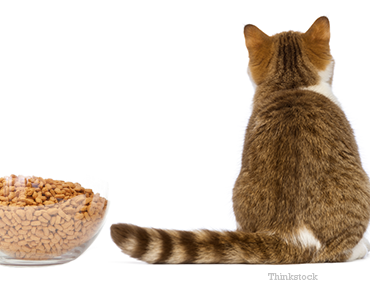
If your cat was just diagnosed with hepatic lipidosis, fear not! While it sounds scary, hepatic lipidosis simply means that there is inappropriate fat infiltration into the liver. Often known by the laymen’s term “fatty liver,” this disease occurs when cats — especially obese cats — go without food for a few days. Untreated, hepatic lipidosis can result in liver failure and death, so it must be aggressively treated by your veterinarian. Thankfully, the prognosis can be excellent with intravenous (IV) fluids, proper nutritional supplementation, and supportive care, but keep in mind that it can be extremely costly to treat.
Causes of fatty liver disease in cats
So, why do cats develop hepatic lipidosis? Unfortunately, as an emergency critical care specialist, the main reasons why I see it in the ER include the following:
- Introduction of a new diet without appropriate slow weaning or acclimatization. You should never force your cat to go “cold turkey” and change your cat’s diet acutely. As we all know cats don’t tolerate sudden change well, and diet changes should always be transitioned slowly over several days to weeks. [Editor’s note: Always speak to your veterinarian before changing your cat’s diet]
- Introduction of a new pet (e.g., dogs or cats) which causes environmental stress and may result in your cat’s sudden loss of appetite
- Introduction of two-legged newborns (i.e., human babies) causing environmental stress
- Stressful situations (e.g., visiting guests who live in your house for a few days, scaring your cat away)
Symptoms of fatty liver disease in cats

Signs of hepatic lipidosis can be really subtle, so it’s important to watch for clinical signs of the following:
- Decreased appetite or complete inappetance (i.e., anorexia)
- Hiding in unusual places (e.g., closet)
- Weakness or lethargy
- Icterus/jaundice (a yellow tinged color to the gums or skin, best seen on the ears and eyes)
- Drooling (often a sign of nausea)
- Vomiting
- Dehydration
- Small fecal clumps in the litter box (due to lack of eating)
- Constipation
- Collapse
- Weight loss
- Muscle wasting
- A weakened neck (the head hangs down more than usual with a chin tuck)
When untreated or in severe cases — signs of liver failure can include the following:
- Black tarry stool
- Bruising (abnormal clotting)
- Coma (from the liver poisons building up in the body)
- Abnormal behavior progressing to seizures
- Death
How do we diagnose and treat fatty liver disease in cats?
The diagnosis of hepatic lipidosis is typically based on history, clinical signs consistent with hepatic lipidosis, blood work, and an abdominal ultrasound of the abdomen (specifically looking at the liver and gall bladder). Specific blood work should evaluate the white and red blood cells, kidney and liver function, protein, electrolytes, and potentially even the clotting function of the body. Additional tests may include x-rays, abdominal ultrasound, and aspirates or biopsies of the liver. An aspirate is necessary to help rule out other causes of jaundice in cats, such as cholangiohepatitis, pancreatitis, gall bladder stones, cancer (specifically lymphosarcoma), inflammatory bowel disease, or even certain toxins.
Treatment typically requires 24/7 care for several days to include the following:
- IV fluids to help treat dehydration
- Placement of a temporary feeding tube to provide adequate calories (this may be necessary for several weeks)
- Anti-vomiting medication
- Appetite stimulants
- Antibiotics
- Vitamin K (to help fix clotting problems if abnormal)
- Potentially plasma transfusions (if severe clotting problems are noted)
So how do you avoid this and save yourself thousands of dollars (and your cat a feeding tube)?
When it comes to cats, do everything slowly. Slow acclimatization is imperative so your cat has time to handle the stress and adjust. More importantly, make sure to observe your cat’s appetite, and when you notice that he hasn’t eaten for more than 2-3 days, seek veterinary attention immediately! When it comes to hepatic lipidosis, the sooner you diagnose it, the less expensive – and less deadly – it can be for your cat!
If you have any questions or concerns, you should always visit or call your veterinarian -- they are your best resource to ensure the health and well-being of your pets.
![]()
